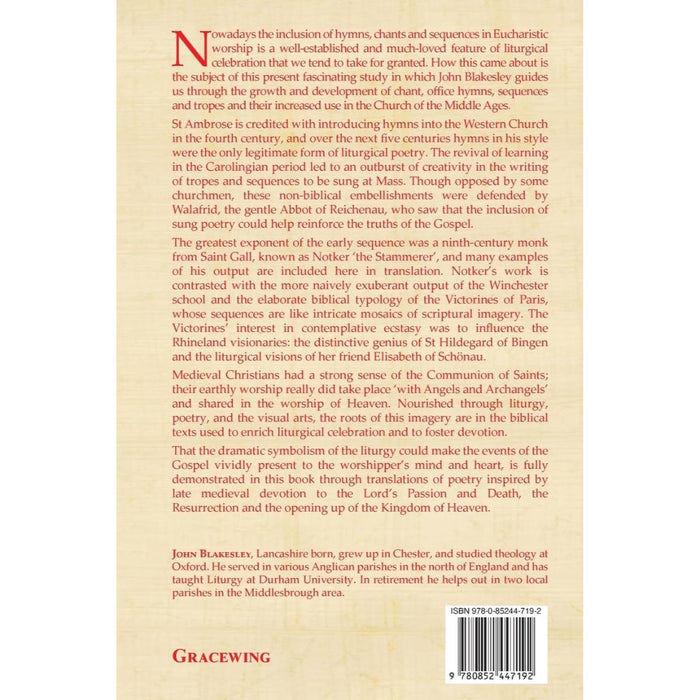
With Angels and Archangels: Sharing the Worship of Heaven. Bible, Poetry, Liturgy and Devotion in the Middle Ages, by John Blakesley
Nowadays the inclusion of hymns, chants and sequences in Eucharistic worship is a well-established and much-loved feature of liturgical celebration that we tend to take for granted. How this came about is the subject of this present fascinating study in which John Blakesley guides us through the growth and development of chant, office hymns, sequences and tropes and their increased use in the Church of the Middle Ages. St Ambrose is credited with introducing hymns into the Western Church in the fourth century, and over the next five centuries hymns in his style were the only legitimate form of liturgical poetry. The revival of learning in the Carolingian period led to an outburst of creativity in the writing of tropes and sequences to be sung at Mass. Though opposed by some churchmen, these non-biblical embellishments were defended by Walafrid, the gentle Abbot of Reichenau, who saw that the inclusion of sung poetry could help reinforce the truths of the Gospel. The greatest exponent of the early sequence was a ninth-century monk from Saint Gall, known as Notker 'the Stammerer', and many examples of his output are included here in translation. Notker's work is contrasted with the more naively exuberant output of the Winchester school and the elaborate biblical typology of the Victorines of Paris, whose sequences are like intricate mosaics of scriptural imagery. The Victorines' interest in contemplative ecstasy was to influence the Rhineland visionaries: the distinctive genius of St Hildegard of Bingen and the liturgical visions of her friend Elisabeth of Schönau. Medieval Christians had a strong sense of the Communion of Saints; their earthly worship really did take place 'with Angels and Archangels' and shared in the worship of Heaven. Nourished through liturgy, poetry, and the visual arts, the roots of this imagery are in the biblical texts used to enrich liturgical celebration and to foster devotion. That the dramatic symbolism of the liturgy could make the events of the Gospel vividly present to the worshipper's mind and heart, is fully demonstrated in this book through translations of poetry inspired by late medieval devotion to the Lord's Passion and Death, the Resurrection and the opening up of the Kingdom of Heaven.
Author: John Blakesley
Format: Paperback
Number of Pages: 192
Published: Feb 2024
Dimensions: 152mm x 228mm.

